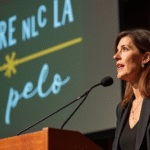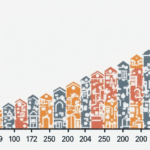The Evolution of Pets in Modern Households
Not too long ago, the idea of having a pet at home was far simpler than it is today. In traditional Mexican families, where multiple generations lived under one roof—parents, children, grandparents, aunts, uncles, and even cousins—a dog’s role was primarily to watch over the yard or house. They ate leftovers from the dinner table and rarely had specialized dog food. Pets were not seen as family members but rather as companions or guardians. Cats, on the other hand, had an even more utilitarian role: catching mice and keeping the house free of pests.
From Pets to Family Members
This world has changed dramatically. Today, dogs and cats are no longer simply “pets”; they have become four-legged children, true family members. The terms “perrijos” (dog owners) or “gatijos” (cat owners) reflect a clear trend: for many households, having a pet has become an alternative to having children or an emotional complement to a more hectic urban life.
The Pandemic’s Impact
The 2020 pandemic marked a before and after in this transformation. Spending so much time at home, millions of people found companionship and emotional support in their dogs and cats. Stress, anxiety, and uncertainty became more manageable with the presence of a pet demanding attention, affection, and play. In fact, there was a real boom in adoptions during that period: people who had never considered having a companion pet discovered in them a source of stability and affection.
The Rise of Pet Industries
This social transformation opened the door to entire industries. The pet food market moved beyond generic kibble. Today, we find food with specific proteins, hypoallergenic recipes, diets for delicate digestions, vegan food, and even gourmet menus designed by veterinarians. It’s now a multimillion-dollar portfolio that grows annually.
The accessories business also exploded. Designer collars, winter clothing, raincoats, and even carriages for walks. The comparison is not exaggerated: entering a specialty store for pet accessories is almost like visiting a baby store, but adapted for four legs.
Health Benefits for Humans
The benefits also extend to human health. Many people who never had the habit of walking now do so because their dog needs it. Walking the pet became not only a healthy routine but also a social experience: in parks, colonies, or plazas, owners meet, chat, and create community. In many cases, the pet opened the door to a more active life and new friendships.
The Rise of Dog Walkers
Another industry was born from this: dog walkers. In cities like Mexico City, Monterrey, or Guadalajara, it’s increasingly common to see people walking six or seven dogs at once. They are hired once or twice a day by owners who work long hours or live in small apartments. This service, now quite common, is part of urban routine.
Impact on Retail and Restaurants
This trend’s impact also reached retail and restaurants. Shopping malls, cafes, and restaurants understood that if pets are children, they can’t be left out. That’s how “pet-friendly” spaces were born, offering water, snacks, and even special menus for animals. What was once exclusive to some trendy colonies is now a necessity to compete in hospitality.
The Rise of Pet Adoption
Another crucial aspect is adoption. Amidst the trend of humanizing pets, social consciousness about not profiting from living beings also grew. In many cities, shelters, adoption campaigns, and public square events multiplied where dogs and cats sought responsible homes. Adopting became not only an act of love but also a statement of social responsibility.
The Rise of Cats
We can’t forget cats, who found a special place in this evolution. During the pandemic, many people chose to have a cat because their care requires fewer outings and less dependency. They are ideal companions for those who spend a lot of time at home or seek a balance between affection and autonomy. In fact, the cat boom was so noticeable that some cities reported waiting lists for feline adoptions.
Conclusion
In summary, we are facing a deep cultural change. Pets have transitioned from simple domestic animals to the central part of family and social life. Their presence has transformed homes and entire industries. What was once a basic companionship relationship is now an economic, social, and emotional phenomenon that will continue to grow.
Key Questions and Answers
- What has changed about having pets at home? Pets have evolved from being simple companions to integral family members, influencing lifestyle, industries, and social norms.
- How did the pandemic affect pet ownership? The pandemic led to a surge in pet adoptions, as people sought companionship and emotional support during lockdowns.
- What industries have grown due to this trend? Industries such as pet food, accessories, and dog walking services have expanded significantly.
- How do pets impact human health? Owning a pet can encourage regular exercise and foster social connections through shared walks and interactions in public spaces.
- What is the significance of pet-friendly spaces in retail and restaurants? Pet-friendly environments have become essential for customer satisfaction and competitiveness in hospitality.
- How has pet adoption been influenced by this trend? The trend has increased awareness of responsible pet ownership and supported shelters and adoption campaigns.






